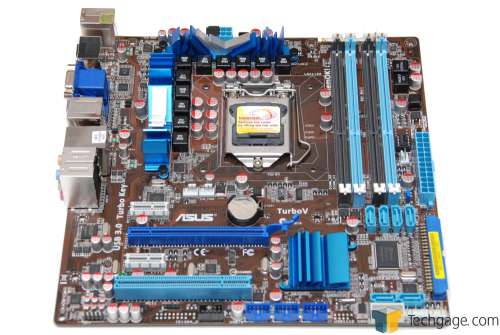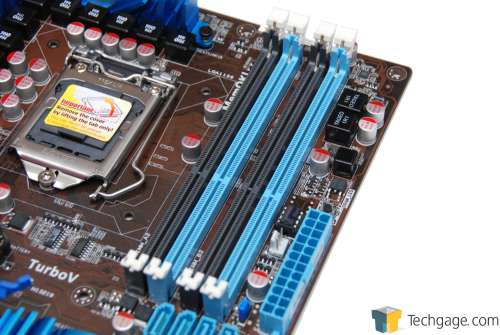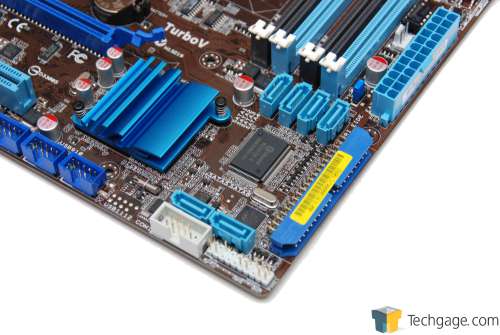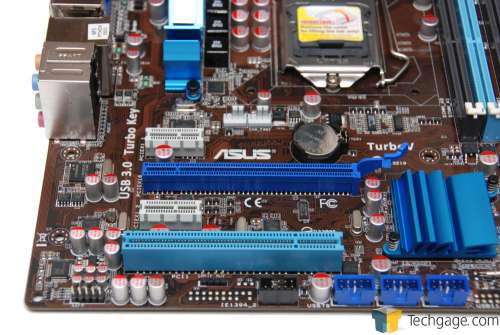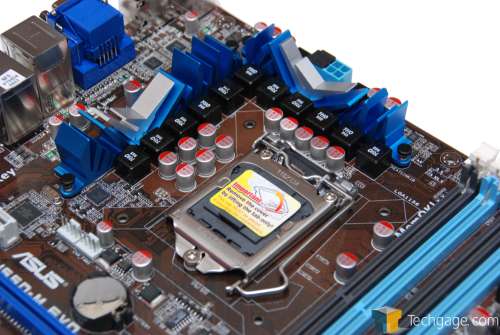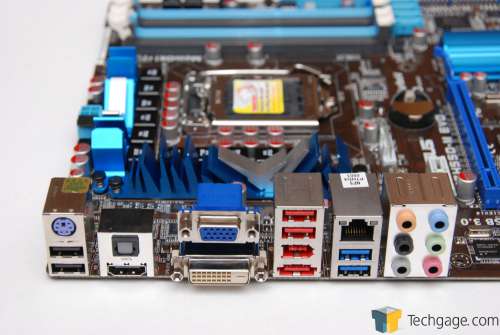- Qualcomm Launches Snapdragon 4 Gen 2 Mobile Platform
- AMD Launches Ryzen PRO 7000 Series Mobile & Desktop Platform
- Intel Launches Sleek Single-Slot Arc Pro A60 Workstation Graphics Card
- NVIDIA Announces Latest Ada Lovelace Additions: GeForce RTX 4060 Ti & RTX 4060
- Maxon Redshift With AMD Radeon GPU Rendering Support Now Available
ASUS P7H55D-M EVO & Intel DH55TC
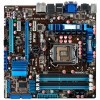
With Intel’s recent Clarkdale processor launch, the itch to build that new HTPC is no doubt greater than ever. Not only does Intel offer a wide-range of processors, but motherboard vendors are currently offering an incredible amount of H55 models. We’re taking a look at two here, Intel’s own DH55TC and ASUS’ P7H55D-M EVO.
Page 1 – Introduction; ASUS’ P7H55D-M EVO
When we took a look at Intel’s latest Clarkdale architecture earlier this month, we received two H55-based motherboards at around the same time; ASUS’ P7H55D-M EVO and Intel’s DH55TC. Thanks in part to CES and other things, we haven’t received a follow-up board in that time, but there are more en route, so stay tuned to the site in the near-future for even more H55-based articles.
In our Clarkdale launch article, I went over most of the details for both of these boards, and because of that, I’ll be borrowing a fair bit of text from there, rather than re-write almost the exact same thing. The biggest changes I’ll be making are on the BIOS pages, so please re-read those if you didn’t pay close attention in our launch article.
The motherboards we’re looking at here aren’t exactly that comparable, but for the sake of killing two birds with one stone, I chose to review them both together. The board we’re looking at from Intel is its DH55TC, and at current time, it’s the company’s only mATX H55 offering. For those looking for something similar in an ATX format, there’s the DH55HC. Intel targets this board at the mainstream crowd, with an easy-to-stomach $100 price-tag.
ASUS’ offering is the P7H55D-M EVO, a slightly more expensive offering, but one with a far more robust feature-set. It rolls in at $135 and includes a sweet board layout, superb overclocking (including Clarkdale’s GPU) and also USB 3.0 support. It doesn’t support SATA 3.0, but I can’t fault ASUS there as that’s a technology that’s likely to take off even slower than USB 3.0, so there’s little need for adding extra cost to the board for it.
To get right into things, let’s take a look at ASUS’ board and BIOS, and then Intel’s, and then we’ll move straight into our testing results.
Closer Look at ASUS’ P7H55D-M EVO
As briefly mentioned above, the P7H55D-M EVO caters to those who aren’t looking for a barebones board, but rather one replete with features, smart design and robust BIOS. It would go well with enthusiasts of any stripes, or someone who simply wants a reliable and feature-rich board for their new HTPC build.
You can tell that ASUS doesn’t intend this as being a low-end board simply by looking at it. Unlike most other mATX offerings, this one includes an 8-3 power phase solution, along with an 8-pin motherboard connection. These two factors alone are enough to suggest that this board is designed for overclocking, and as we saw in our special overclocking article, it sure doesn’t disappoint.
If there’s just one thing I notice right off about this board that I’d change, it’s that it only has three on-board fan connectors. Given this is an mATX board, that’s not a huge problem since it’s destined to be used in a smaller chassis, but with one for a memory cooler, and another for the CPU, that only leaves one for the chassis. Fortunately, many chassis fans today include molex power connectors that plug into the PSU cables, so this still shouldn’t be much of a problem for many people.
Like Intel’s and all other Westmere-based boards to be released, the P7H55D-M EVO includes 4x DIMM slots with support for up to 16GB of RAM at DDR3-1333 speeds. In the picture below, you can see two of the phases that are dedicated to the memory. Hidden right above the 24-pin motherboard connector is the MemOK! button, which when pushed, allows the PC to boot up with memory that may be riddled with bad SPD information, or is designed to run at much faster speeds than the CPU or motherboard could handle at a given voltage.
ASUS includes a total of six S-ATA connectors on this board, all of which are 3Gbit/s, not 6Gbit/s. ASUS will offer other H55 boards that offer S-ATA 3.0 (6Gbit/s) support, but this one doesn’t have it. Instead, this board includes just USB 3.0 support, which we’ll see shortly. Unlike Intel’s DH55TC, this board does include an IDE port, for those who still wish to hold onto their older drives.
The PCI configuration is almost identical to Intel’s DH55TC, except ASUS has opted to put the PCI-E graphics slot in the middle of the two PCI-E 1x. This was likely done so as to not cover the BIOS battery, which is highly appreciated as that’s an issue commonly overlooked by many motherboard vendors. Along the bottom, you’ll find the FireWire and USB 2.0 internal headers. The USB headers would allow for 6 extra ports in total.
Most of the power phases available on this board are located right around the CPU socket, with futuristic-looking heatsinks behind them. As we’d expect, there’s an ample amount of room around the CPU socket for most any cooler on the market – especially those that will typically be used for an mATX motherboard.
Because the H55 chipset limits the overall USB port count to 12, six are dedicated as internal headers, while the other six are found at the back I/O section. Along with those, ASUS includes a FireWire, eSATA, LAN, full audio ports (including S/PDIF), PS/2 keyboard and of course, the three same display connectors we saw on Intel’s board. Though Intel is pushing DisplayPort, we’re likely only to see that connector available on higher-end H55/H57 motherboards.
Overall, I have little bad to say about the P7H55D-M EVO. I’ve used the board quite a bit since our Clarkdale article, and it was the only board used during testing there, and I’ve come to enjoy it quite a bit. There’s nothing glaring that bothers me, so that’s a good sign. The layout is great, installation was made easy, and I ran into no single hitch during my use. Fortunately, the BIOS stacks up to the rest of the board, so let’s take a look at that next.
Support our efforts! With ad revenue at an all-time low for written websites, we're relying more than ever on reader support to help us continue putting so much effort into this type of content. You can support us by becoming a Patron, or by using our Amazon shopping affiliate links listed through our articles. Thanks for your support!




